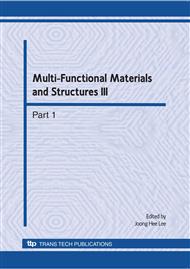p.503
p.507
p.511
p.515
p.519
p.523
p.527
p.531
p.535
An Investigation on the Local Structure of Silicon: Liquid to Undercooled Regime
Abstract:
We present the modelled local structure for undercooled silicon beginning from its liquid state, ~1730K to ~1550K. The modelling procedure was achieved by using reverse Monte Carlo (RMC) modelling technique fitting to x-ray static structure factors. The calculated radial distribution functions satisfied experimental observes either liquid or undercooled region. To make a detailed analysis on the modelled local environment we have focused on the distributions both average numbers of atoms within first coordination shell and bond angles whereas the uniqueness of model is discussible. In order to construct model that is more close to nature, the minimum and maximum bond lengths and the average coordination number constraints could have been used. The predicted results using RMC technique show that there is a possible structural transition and it slightly transforms into covalent-like bounded open network structure from its metallic structure, while decreasing temperature.
Info:
Periodical:
Pages:
519-522
Citation:
Online since:
August 2010
Authors:
Keywords:
Price:
Сopyright:
© 2010 Trans Tech Publications Ltd. All Rights Reserved
Share:
Citation:


